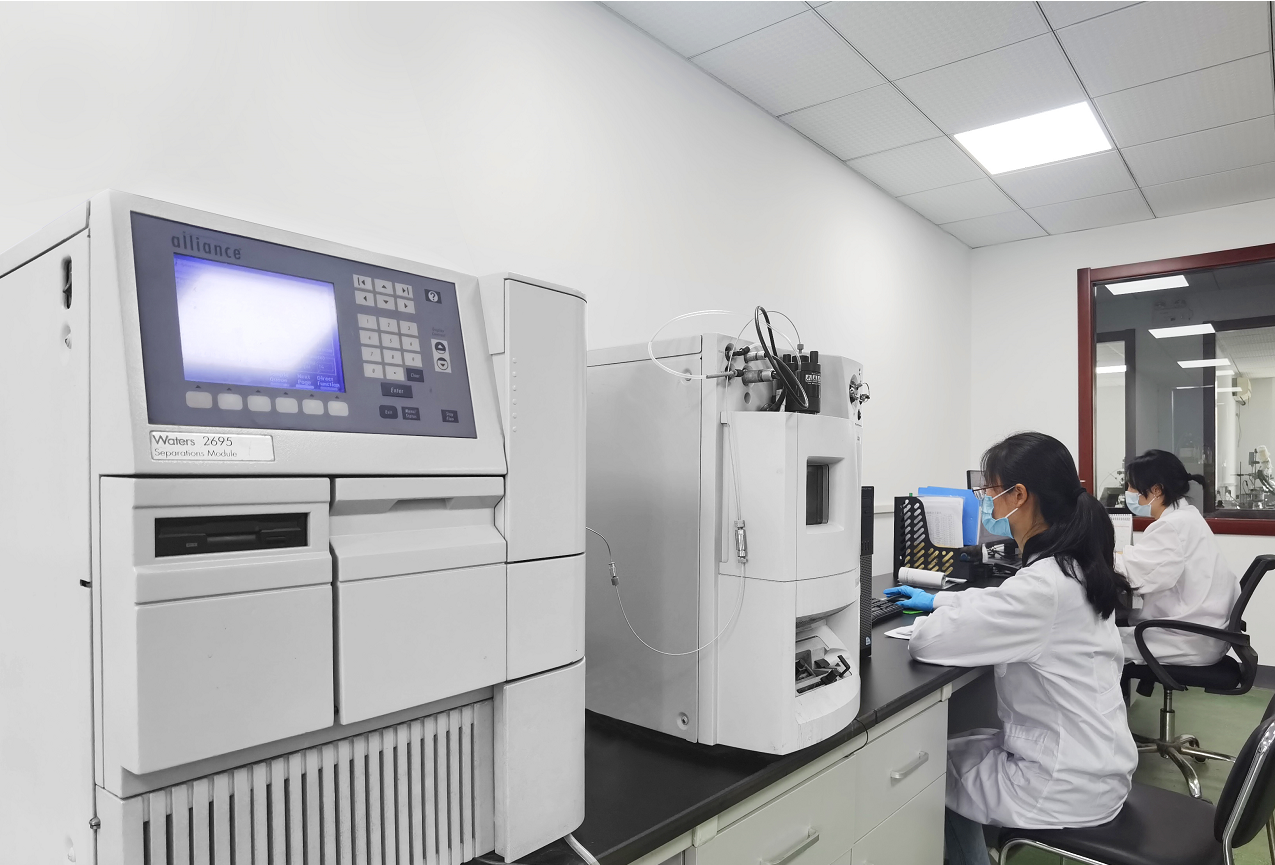About Us
ChinaPeptides is famous as a tech company in the peptide synthesis industry.
We offer quality custom peptides synthesis service with a wide variety of purity levels, scales and modifications to fit your research needs.
Our process includes both automatic and manual peptide synthesizers, purification and analytical HPLC systems, and advance technology.
Every peptide from ChinaPeptides is tested by Mass spectrum and HPLC chromatogram, and the quality analysis data sheet is been provided to our customers.
We choose standard stepwise solid phase peptide synthesis (SPPS) procedures, including both Boc and Fmoc chemical synthesis technique, the current and popular method of peptide synthesis.
About SPPS
Solid phase peptide synthesis (SPPS), developed by R. B. Merrifield, was a major breakthrough allowing for the chemical synthesis of peptides and small proteins.
The first stage of the technique consists of peptide chain assembly with protected amino acid derivatives on a polymeric support. The second stage of the technique is the cleavage of the peptide from the resin support with the concurrent cleavage of all side chain protecting groups to give the crude free peptide.
The general principle of SPPS is one of repeated cycles of coupling-deprotection. The free N-terminal amine of a solid-phase attached peptide is coupled to a single N-protected amino acid unit. This unit is then deprotected, revealing a new N-terminal amine to which a further amino acid may be attached.
There are two major used forms of solid phase peptide synthesis – Fmoc (base labile alpha-amino protecting group) and t-Boc (acid labile protecting group). Each method involves different resins and amino acid side-chain protection and consequent cleavage/deprotection steps. Fmoc chemistry is known for generating peptides of er quality and in greater yield than t-Boc chemistry. Impurities in t-Boc-synthesized peptides are morely attributed to cleavage problems, dehydration and t-butylation.
After cleavage from the resin, peptides are usually purified by reverse phase HPLC using columns such as C-18, C-8, and C-4.
The primary advantage of SPPS is its yield. As peptides consists of many amino acids, if the yield for each amino acid addition is much less than 100%, overall peptide yields are negligible. For example, if each amino acid addition has a 90% yield then the overall yield of a 50 amino acid peptide is only 0.5%. Modern SPPS instrumentation pushes coupling and deprotection yields to greater than 99.99%, giving an overall yield of greater than 99% for a 50 amino acid peptide.
 An example of solid phase peptide synthesis
An example of solid phase peptide synthesis
The following is an outline of the synthetic steps for peptide synthesis on Wang resin as the solid support, using the base labile 9-fluorenylmethyloxycarbonyl (Fmoc) protecting group.
Fmoc deprotection
Load 0.08 mmol of Fmoc-Val-Wang resin into a fritted column equipped with a plastic cap. Wash the resin with 2 x 3-ml portions of DMF (dimethylformamide) for 1 minute each. Next, add about 3 ml of 20% piperidine in DMF and allow the deprotection to continue for 15 minutes. During this time, gently swirl or agitate the column to assure a complete mixing. After the reaction is complete (about 15 min.), drain the reaction column and wash the resin again with DMF (4 x 3ml).
Amide bond coupling
In a small vial, pre-activate the 3 equivalents Fmoc amino acid by combining it with 3 equivalents of HBTU, 6 equivalents of DIPEA (N,N'-Diisopropylethylamine), and 3 ml of DMF. Make sure this solution is fully dissolved and then allow it to react for an additional 3-5 minutes. Then, add this coupling solution to the resin, place the cap on the reaction column, and agitate the resin slurry every 2-3 minutes over a period of 20 minutes
Cleavage
In order obtain the peptide in the free acid form, the ester linkage is cleaved using strongly acidic conditions such as TFA (trifluoroacetic acid). Treat the resin with 2-3 ml of a solution of trifluoroacetic acid and water 95:5. Gently agitate the resin over a period of 25. Next, drain the column and carefully collect the filtrate into a glass collection vessel.
We offer :Adrenocorticotropic Hormones (ACTH)、 Amyloids、 Apelin Peptides、 Bradykinins、 ß-Amyloids and Related Peptides、Cholecystokinins (CCK)、 Endomorphins、 Endorphin、Exendins、FMRF & Analogs、GnRH Associated Peptides、Growth Factor Fragments、 Growth Hormone & Growth Hormone Releasing Factors、Laminin Peptides、Leucokinin & Analogs、LH-RH & Analogs、Melanin Concentrating Hormone (MCH)、Melanocyte Stimulating Hormones (MSH)、 Neurokinins Neuropeptide Y & Analogs、Orexins、Oxytocins、Parathyroid Hormone & Analogs (PTH)、Peptides YY、Protein Kinase and Related Peptides、Somatostatin & Analogs、Substance P & Analogs、TAT Proteins、Thyrotropin-Releasing Hormones (TRH) 、Vasoactive Intestinal Peptides (VIP) ...